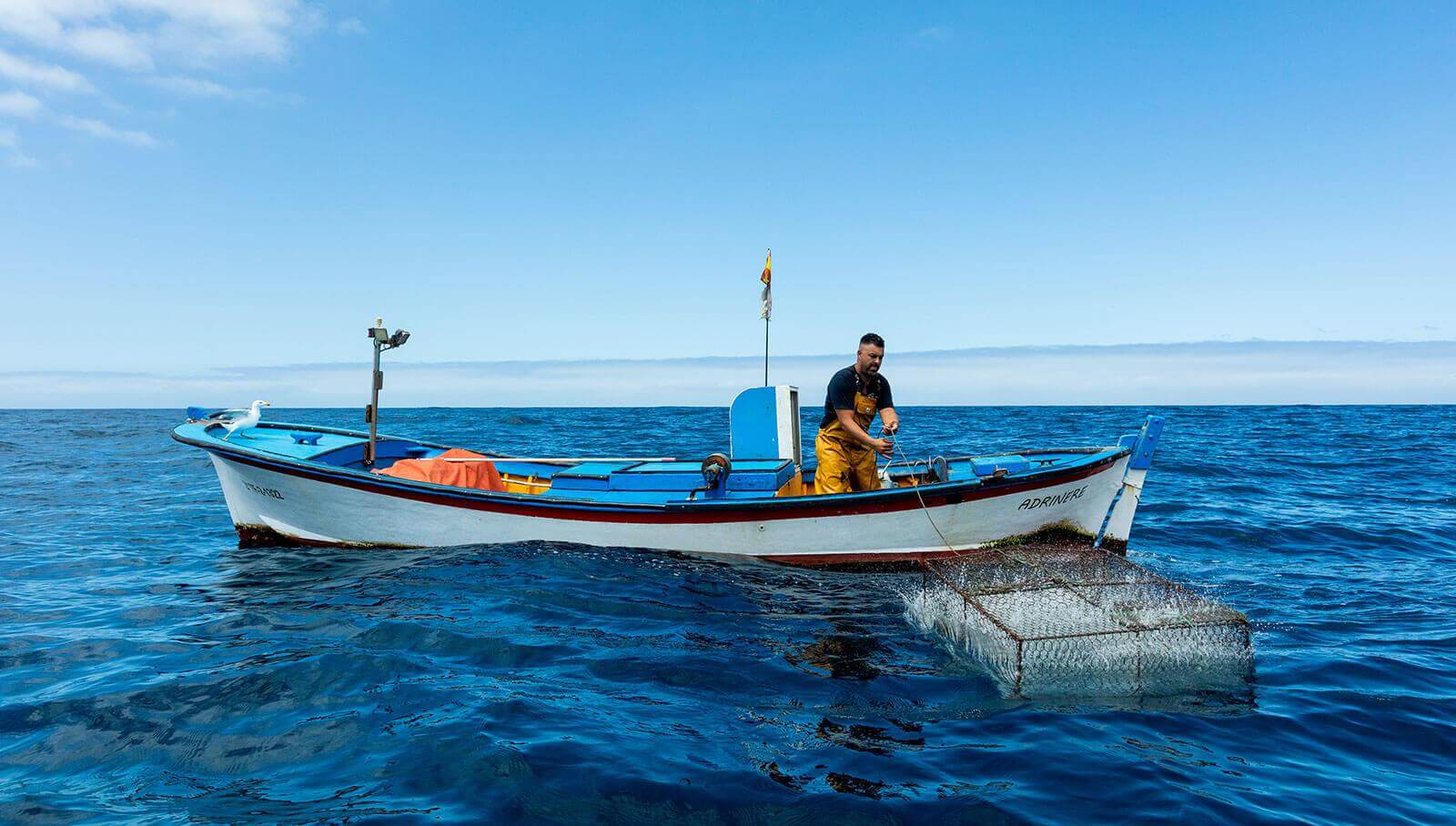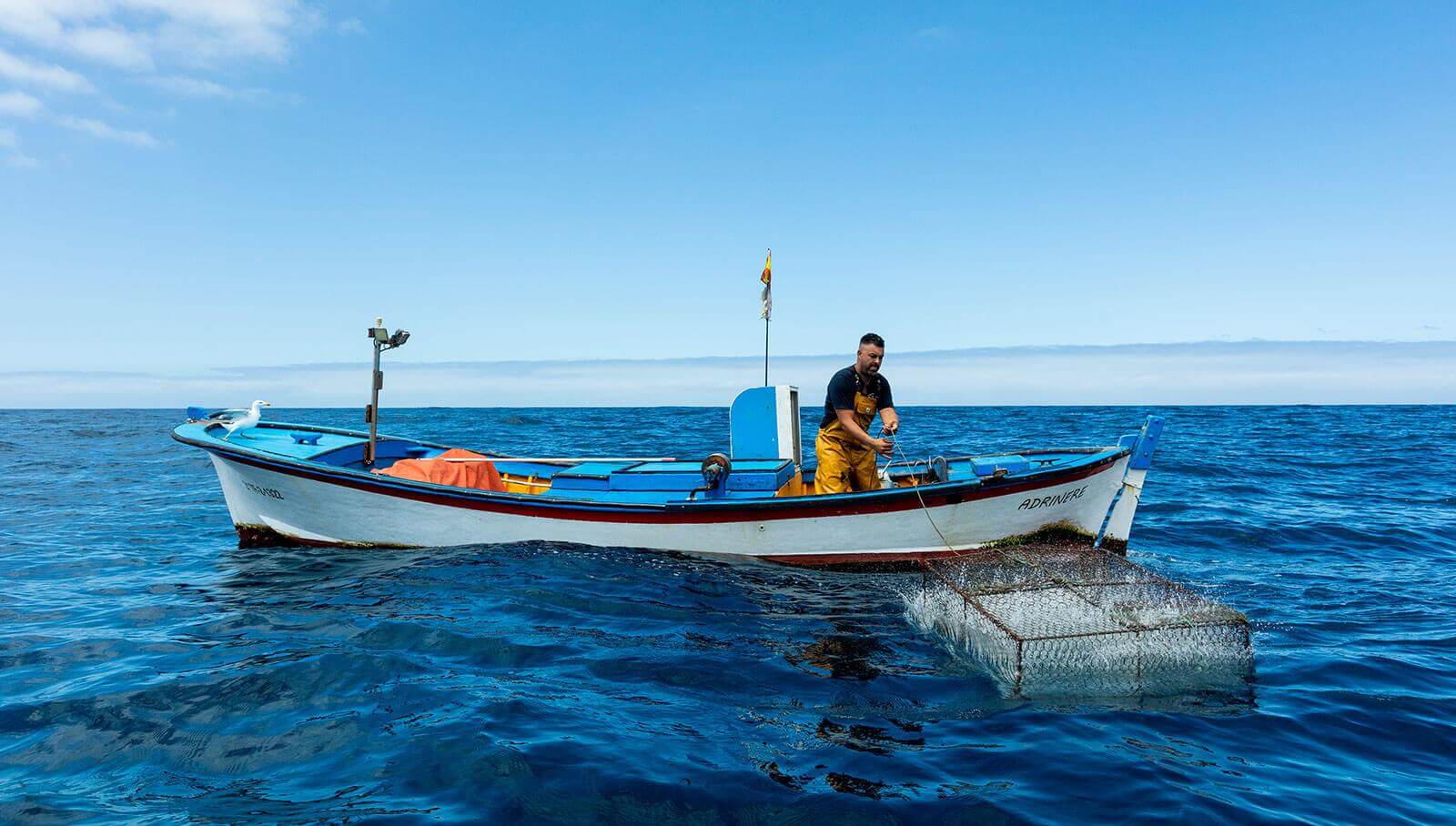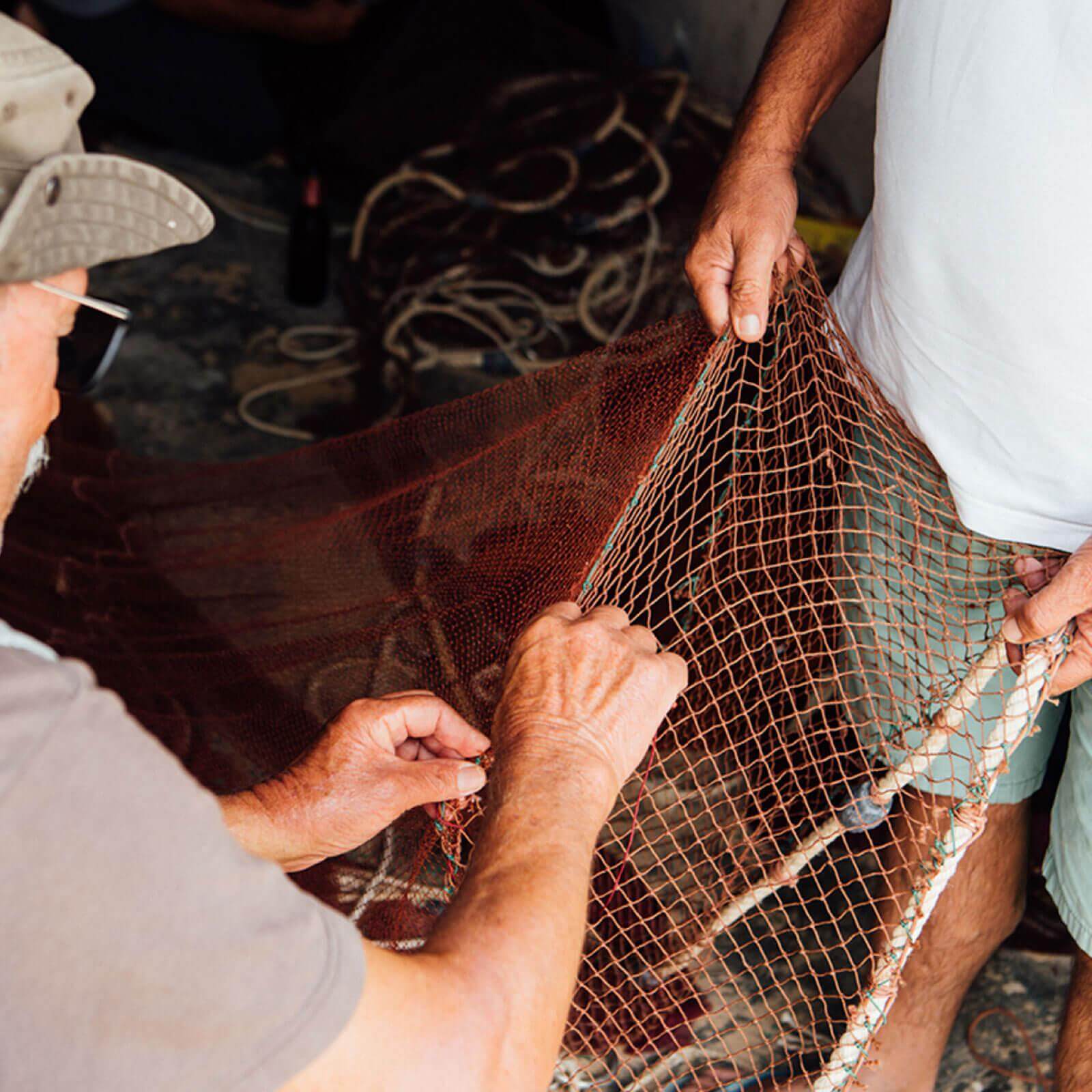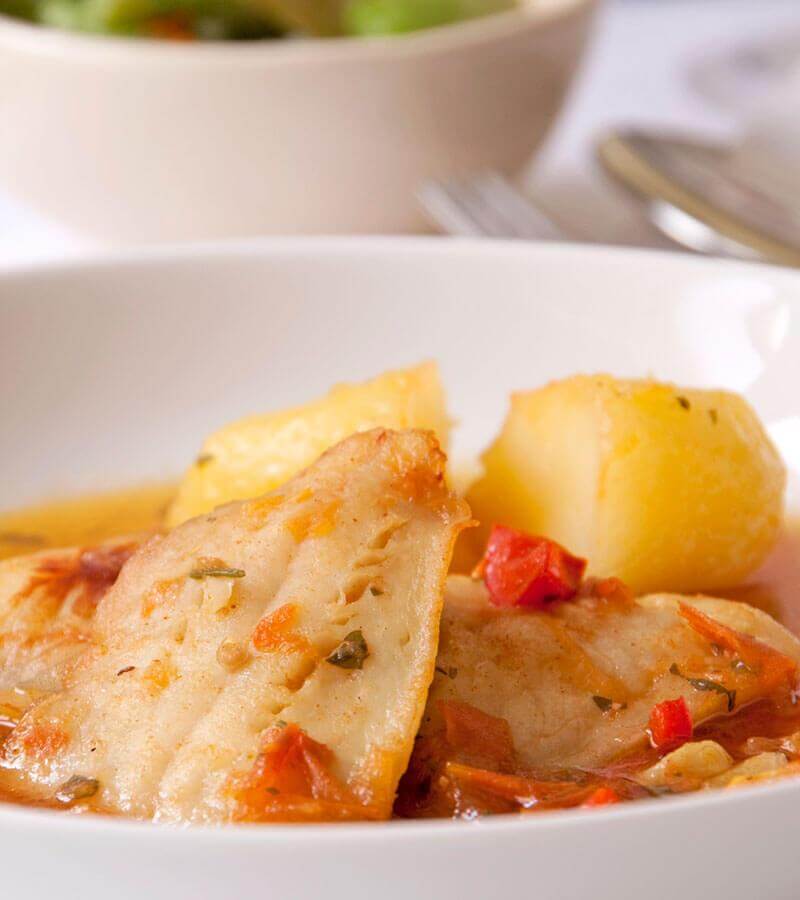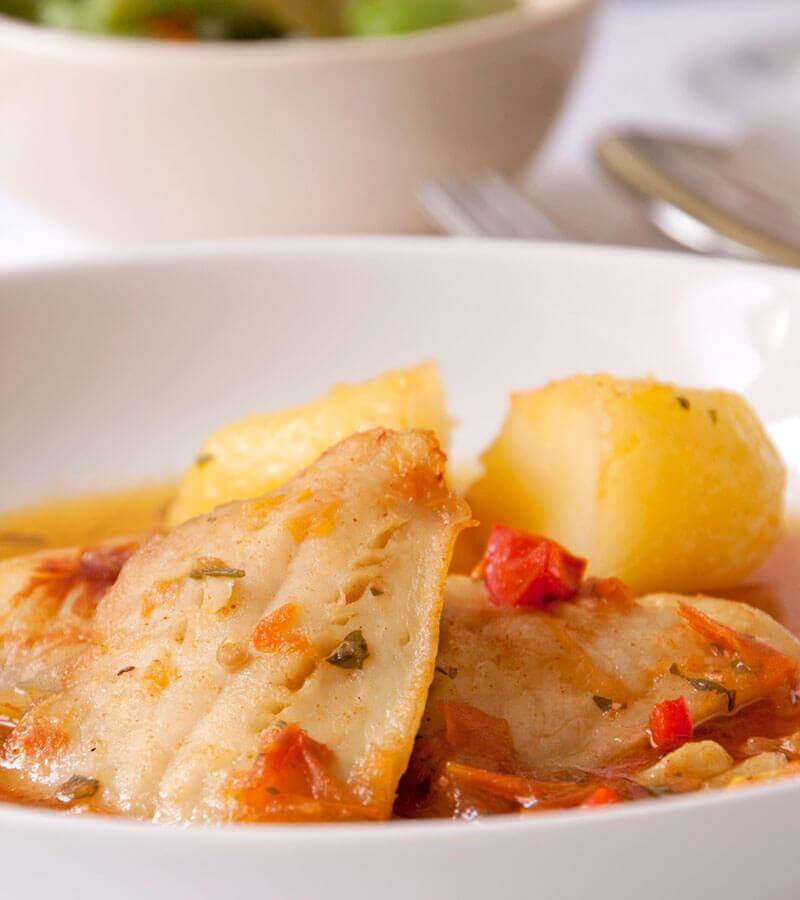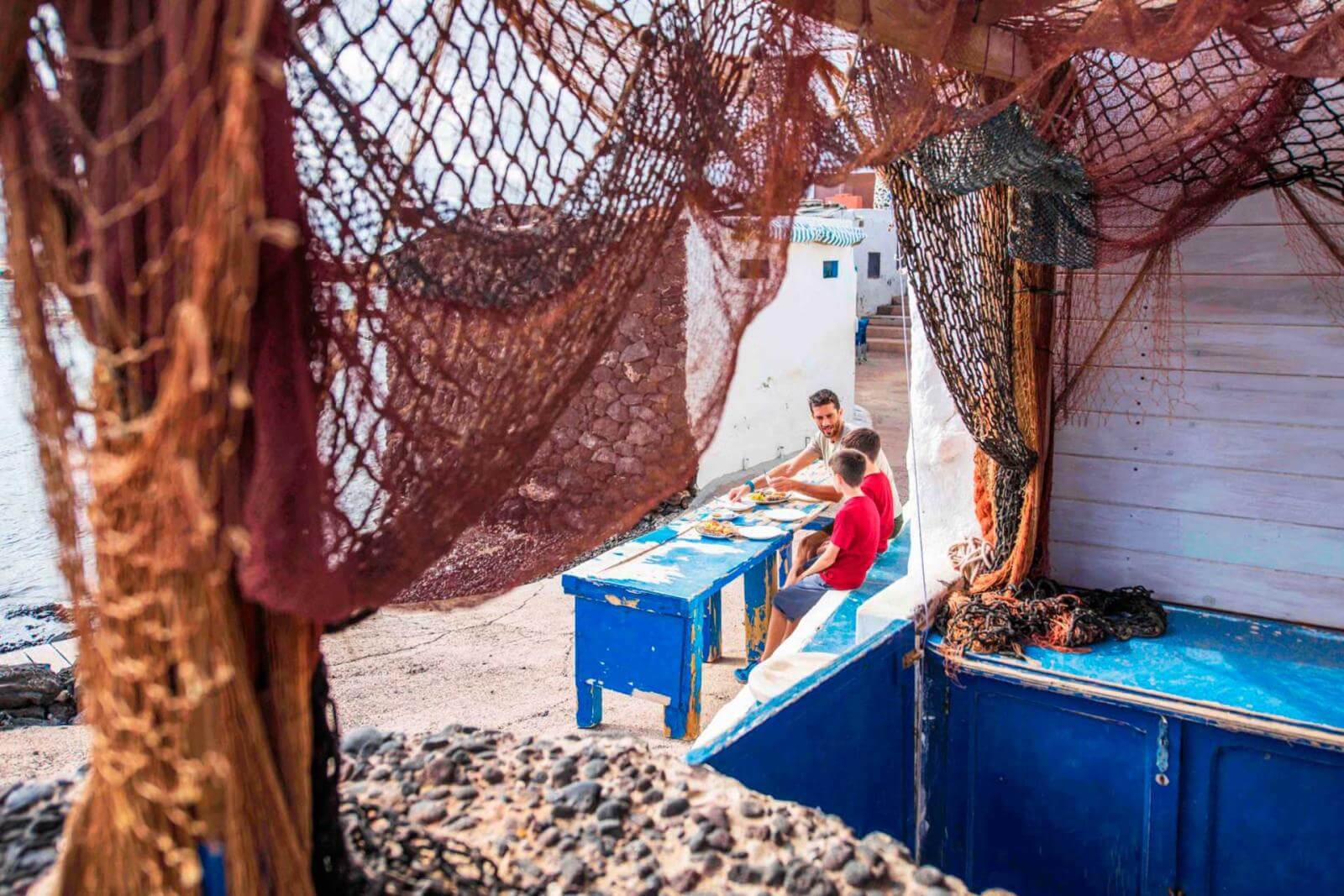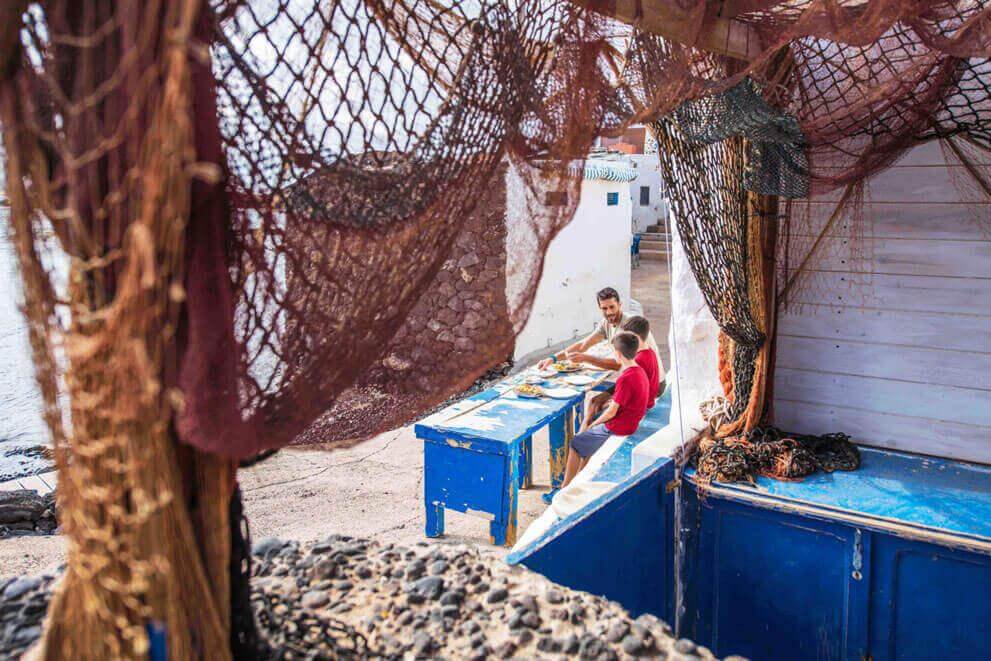The archipelago of the Canary Islands has around 150 marine species of interest for fishing and shellfishing, thanks to the mild temperatures of the Atlantic waters that bathe it. Because these are volcanic islands, both coastal and deep-sea species are captured very close to shore, which means the local gastronomy enjoys exceptional variety and quality in terms of fish.
Fishing in the pools of the Canary Islands
The first inhabitants of the Canary Islands were well aware of how to benefit from the presence of numerous fish in the coastal waters. To catch them, all they had to do was go to the pools or small coves in the vicinity equipped with baskets and employ the local technique known as embarbascar, consisting of throwing the sap of endemic Canarian plants (such as Canary Island spurge or wild tabaiba) into the water to stun the fish and capture them with ease.
Parrotfish, a bright reddish-coloured fish, is one of the most abundant species found around the archipelago, and is highly prized by islanders in their gastronomy.
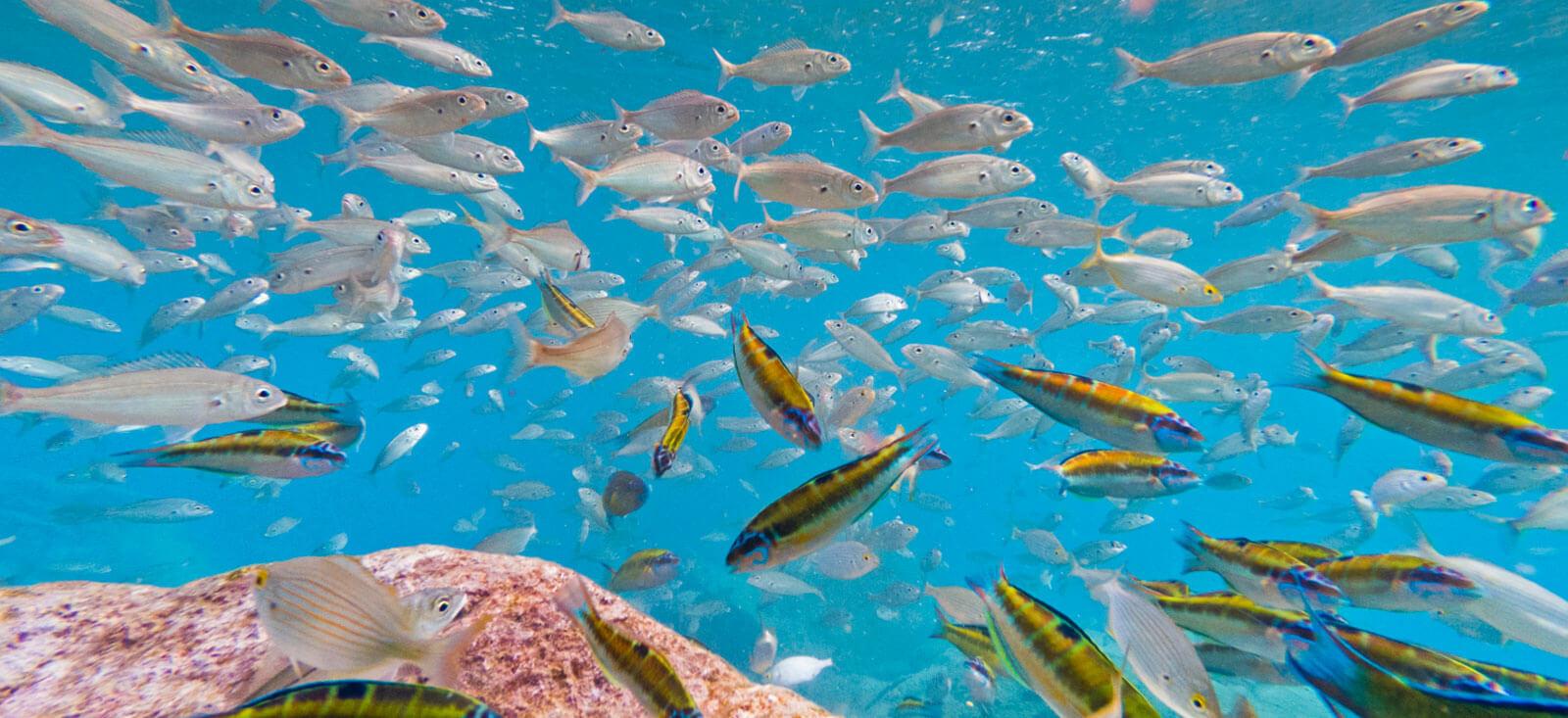
A cold current rich in nutrients
The Cold Canary Current is rich in nutrients, and as such stimulates the presence of a wide variety of marine species. In addition, these nutrients move through the water under the influence of the trade winds and the coastal topography, reaching the coast of the different Canary Islands.
Since these are open ocean waters where artisanal fishing is practised, the boats return to port shortly after putting to sea. And they come with a variety of whole fresh fish, so consumers can enjoy the product practically on the same day it was fished.
From sea to table
The marine ecosystem of the Canary Islands is a place where species that inhabit deep, semi-deep and coastal waters in areas very close to the shore all co-exist. This allows fisherfolk to combine coastal and deep-sea catches within the same day’s fishing.
These ecological circumstances mean that species such as Atlantic bonito or Atlantic bluefin tuna pass through Canarian waters on their migrations, Some of them actually live in the waters of the archipelago permanently. Marine biologist José Antonio González says that “very few regions in the world can claim this great privilege”.
Some other popular species are sardines, mackerel and Atlantic horse mackerel, the indisputable stars of Canarian gastronomy. Cooks, fisherfolk and consumers wax lyrical over dishes such as fish stews or the local “rock fish” casseroles.
A gastronomy route around the Canary Islands
The gastronomy associated to fish and shellfish offers different specialities and possibilities depending on the island:
On Lanzarote, the hake fished off La Graciosa is highly prized, as are the soldier striped shrimps (also known here as gambas de la Santa). On Fuerteventura, there is a tradition of eating pescado jareado, fish dried in the sun, especially parrotfish or school shark. And island grouper, white seabream or jack mackerel are commonly served in the form of fish stew. Gran Canaria offers a varied range of fish from the island’s different harbours, such as sardines and mackerel from Agaete, red porgy and greater amberjack from Castillo de Romeral, or tuna from Mogán.
Prawns, cuttlefish, seabream, octopus or catshark can never be absent from the kitchens of Tenerife: they are an authentic treat. La Gomera, meanwhile, is the perfect island for eating fish in season and La Gomera caviar, made with mackerel roe. On La Palma, the highlights are the delicious alfonsino and pejesable (scabbard fish). And finally, on El Hierro the wahoo, the ocean triggerfish and the Atlantic bonito are the most popular species.
Fishing is a symbol of the identity of the Canary Islands, not only because of the artisanal techniques used, but also for the rich variety of cuisine it offers our palates.


